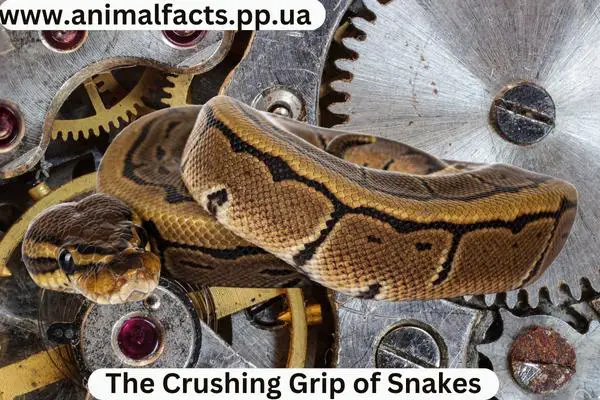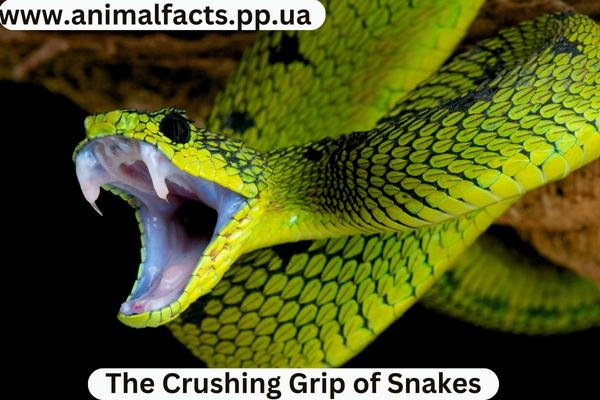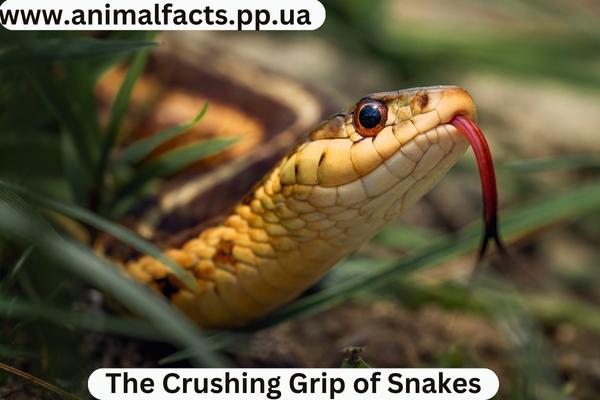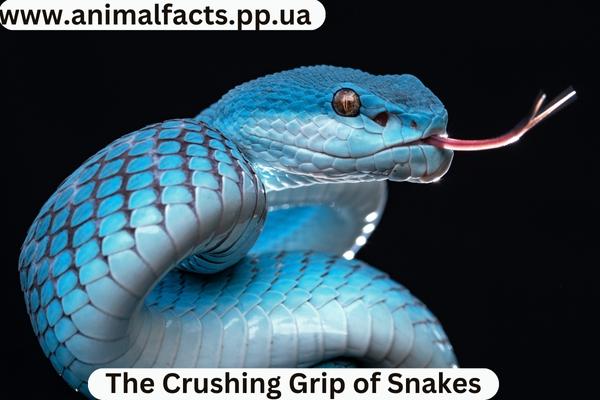The Crushing Grip of Snakes
Snake constriction is a remarkable adaptation that allows certain snake species to overpower and subdue their prey. These serpents exhibit an extraordinary ability to immobilize and ultimately consume their victims through muscular strength, precise coiling, and strategic compression.
In this article, we delve into the mechanics and strength behind snake constriction, exploring the fascinating strategies employed by these remarkable reptiles.
1. Understanding Snake Constriction
Snake constriction is a predatory behaviour employed by numerous snake species, including pythons, boas, and some colubrids.
It involves the snake coiling its body around its prey and exerting pressure to restrict the prey’s breathing and blood circulation, leading to its subjugation.
The snake’s muscular strength and technique play crucial roles in the effectiveness of this hunting strategy.
2. The Muscular Powerhouse: Snake Constrictor Muscles
Snakes possess specialized muscles known as constrictor muscles located along the length of their body. These muscles work in synergy to generate the force necessary for constriction.
The primary muscles involved are the dorsal and ventral longitudinal and 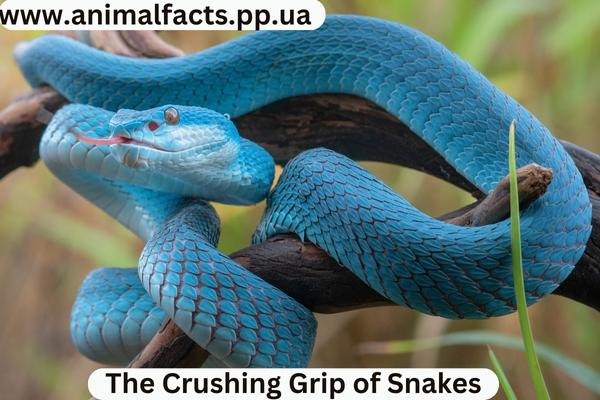
3. Coiling Techniques: Precision and Strategy
Initial Strike: Before constricting, snakes employ various hunting techniques to capture prey. These may include ambush, stalking, or active pursuit. Once within striking distance, the snake lunges and secures a grip on the prey using its sharp teeth and jaws.
a. Coiling Sequence:
The snake initiates the coiling process after seizing the prey. It begins by encircling the prey’s body, starting from the head and progressing towards the tail. The coils are strategically placed to maximize constriction force while minimizing the risk of injury to the snake.
b. Loop Formation:
As the snake continues to coil, it forms a series of loops around the prey. Each loop tightens progressively, exerting increasing pressure on the prey’s body. This constriction impedes the prey’s breathing and compresses vital blood vessels, leading to loss of consciousness and eventually death.
4. Constriction Strength: A Force to be Reckoned With
a. Powerful Squeezing Force:
Snake constriction strength varies among species and is influenced by size, muscle mass, and prey preferences. However, studies have demonstrated that even relatively small snakes can generate constriction forces far exceeding their body weight, highlighting these reptiles’ formidable strength.
b. Adaptations for Enhanced Constriction:
Snakes have evolved several anatomical features that enhance their constriction strength. These include specialized vertebrae that interlock during coiling, allowing for a more efficient force transfer.
Additionally, the scales on a snake’s belly provide traction, enabling them to maintain a firm grip on their prey during constriction.
5. Prey Subjugation and Consumption
Once the prey is immobilized through constriction, the snake consumes it. The snake’s flexible jaws and stretchable ligaments allow it to engulf prey items larger than its head.
The prey is then gradually ingested, aided by the snake’s powerful peristaltic muscle contractions that propel the prey deeper into its digestive system.
6. Conservation Considerations
Snake constriction is a remarkable aspect of these reptiles’ natural behaviours. However, it is essential to understand and respect the potential dangers associated with encountering wild snakes.
Human-snake interactions should be approached cautiously, and conservation efforts must focus on preserving snake habitats and promoting coexistence with these fascinating creatures.
7. The Science Behind Constriction: Physiological Effects on Prey
Snake constriction exerts significant physiological effects on the prey. As the coils tighten, the pressure applied to the prey’s body restricts blood flow, decreasing oxygen supply to vital organs.
This lack of oxygen, combined with the compression of the respiratory system, causes the prey to suffocate. Additionally, constriction can disrupt the normal functioning of the nervous system, further weakening the prey’s ability to resist.
8. Size Matters: Adaptations for Prey Selection
Different snake species exhibit preferences for specific prey sizes. Larger snakes, such as pythons and anacondas, can constrict and consume larger mammals, while smaller snakes may target smaller vertebrates,
such as rodents or birds. The constriction strength is adapted to suit the snake’s preferred prey, ensuring successful subjugation and ingestion.
9. Constriction as a Defensive Mechanism
While snake constriction is primarily associated with hunting and prey subjugation, some snake species may use constriction as a defensive mechanism.
When threatened, snakes may coil their bodies tightly around the predator or intruder, applying pressure to discourage further aggression.
This defensive constriction serves as a deterrent and can allow the snake to escape from potential harm.
10. The Evolutionary Advantage of Constriction
Snake constriction has evolved as an effective hunting strategy for several reasons. Firstly, snakes can immobilize and subdue prey without venom or high-speed pursuits. This energy conservation is advantageous for snakes inhabiting environments with limited food availability.
Secondly, constriction minimizes the risk of injury to the snake during the capture and consumption of prey, as it avoids potentially dangerous struggles. Lastly, constriction enables snakes to consume prey items that may be too large to swallow whole, expanding their dietary range and increasing their chances of survival.
11. Ethical Considerations and Responsible Snake Ownership
Snake constriction is a natural behaviour that should be respected in its proper context. For those who choose to keep snakes as pets, it is essential to provide appropriate and safe enclosures that cater to the specific needs of the snake species.
Responsible snake ownership includes ensuring proper feeding, environmental enrichment, and seeking professional guidance when necessary.
Understanding and appreciating the natural behaviours of snakes, including constriction, promotes their welfare and the responsible stewardship of these fascinating creatures.
12. Research and Scientific Studies on Snake Constriction
Scientists and researchers have conducted extensive studies to understand the mechanics and strength behind snake constriction.
These studies involve various techniques, such as measuring the pressure exerted by constricting snakes, analyzing muscle activity during constriction, and studying the physiological effects on prey.
One fascinating discovery is that the pressure exerted by constricting snakes is not constant but exhibits a pulsating pattern.
This pulsating constriction allows the snake to maintain a tight grip on the prey while conserving energy.
Researchers have used pressure sensors and specialized equipment to measure these pressure patterns, providing valuable insights into the dynamics of snake constriction.
Furthermore, advancements in imaging techniques, such as MRI and CT scans, have allowed scientists to visualize the internal structures of constricting snakes.
These imaging studies have revealed the intricate interlocking of vertebrae, which enhances the snake’s ability to generate and sustain constriction forces.
Researchers have also investigated the impact of snake constriction on prey physiology.
By monitoring vital signs and conducting post-mortem examinations, they have gained a deeper understanding of the physiological effects of constriction, including changes in blood circulation, tissue damage, and oxygen deprivation.
13. Snake Constriction in Mythology and Culture
Snake constriction has captivated human imagination throughout history, leading to its portrayal in myths, legends, and cultural traditions.
In many ancient civilizations, snakes were revered as symbols of power and fertility.
The ability of snakes to constrict and overpower their prey has been associated with concepts of strength, control, and transformation.
In various mythological stories, snakes are depicted as formidable creatures capable of subduing even the most powerful adversaries.
These cultural narratives reflect humans’ awe and respect for snakes’ strength and hunting prowess.
14. Conservation Significance of Snake Constriction
Understanding snake constriction is fascinating from a scientific perspective and holds importance for conservation efforts.
Many snake species are threatened by habitat loss, climate change, and human activities. By comprehending the unique adaptations and behaviours of snakes,
including constriction, conservationists can better design strategies to protect these species and their habitats.
Conservation initiatives should focus on preserving snake habitats, reducing human-snake conflicts through education and awareness, and implementing responsible management practices.
Recognizing snakes’ ecological significance and role as apex predators helps maintain the delicate balance of ecosystems they inhabit.
Conclusion
Snake constriction showcases the incredible mechanics and strength possessed by these serpentine predators. Snakes can overpower and immobilise their prey through the coordinated action of their constrictor muscles and precise coiling techniques.
The power of constriction is a testament to the remarkable adaptations that have allowed snakes to thrive as highly efficient hunters. By unraveling the intricacies of snake constriction,
we gain a deeper appreciation for the wonders of nature and the diverse strategies employed by its remarkable creatures. Click Here For More Information About Reptiles.

